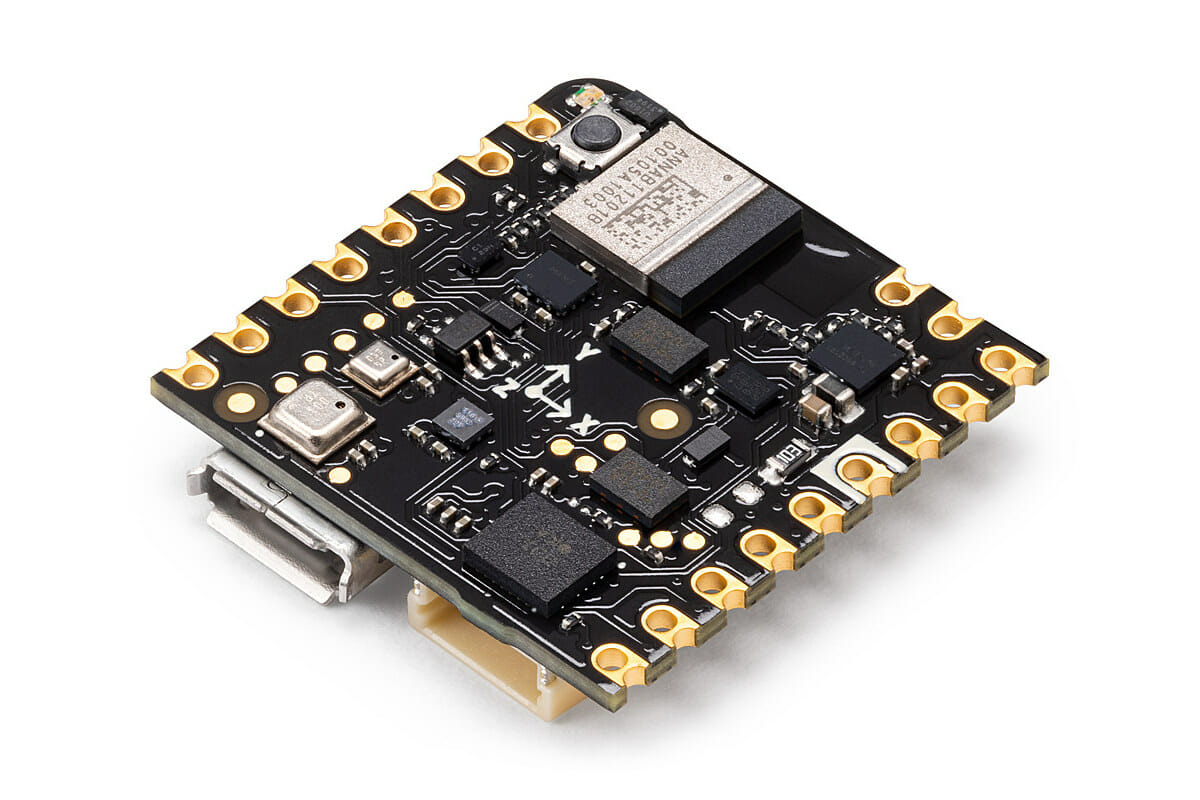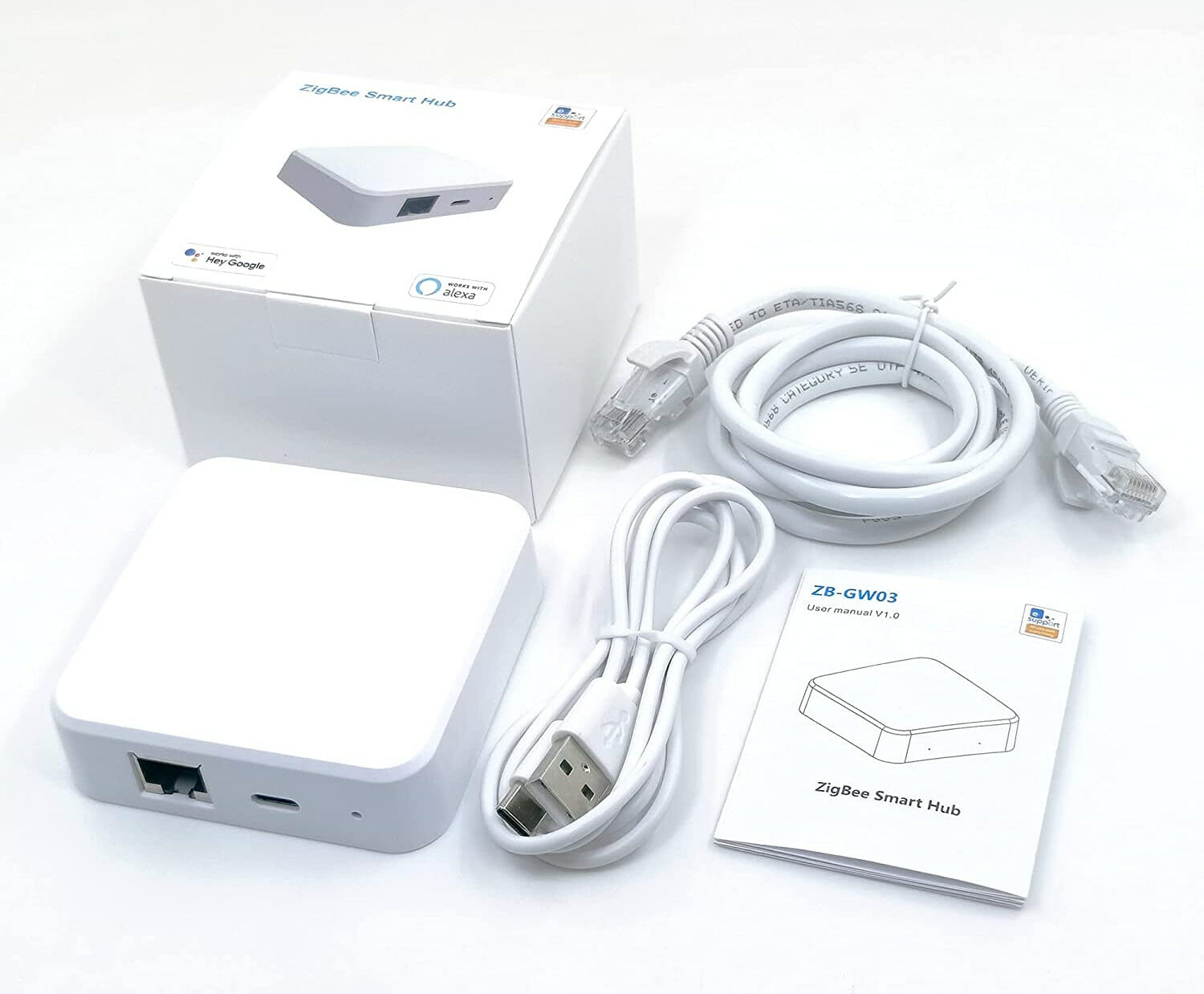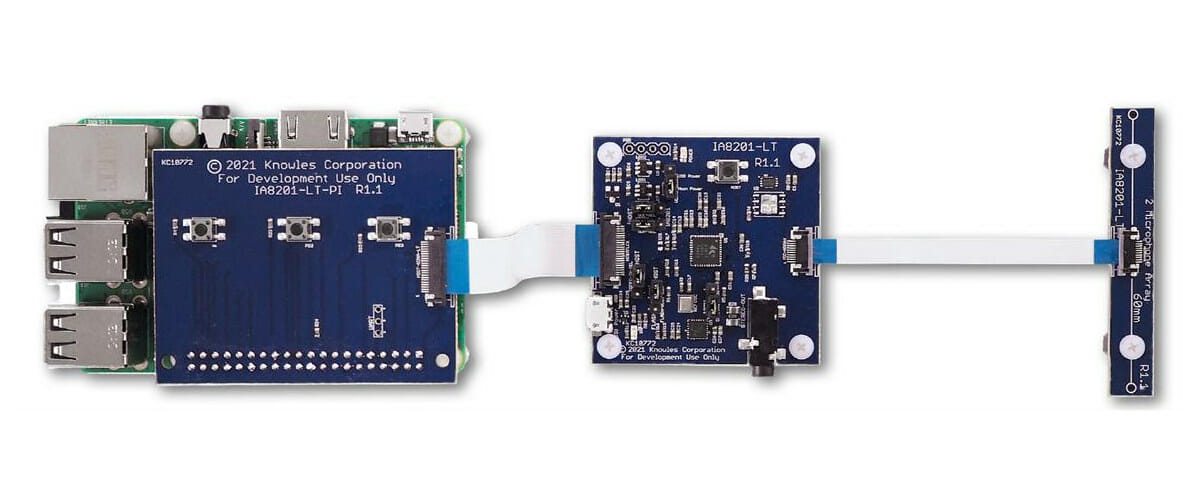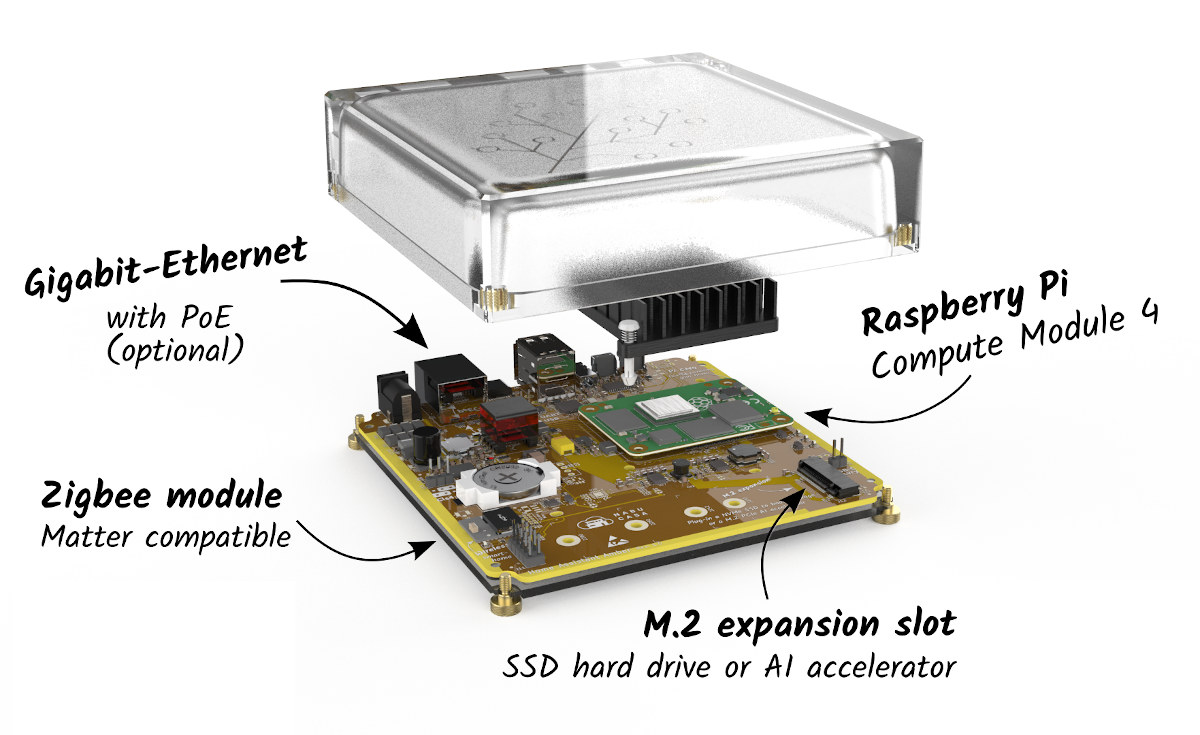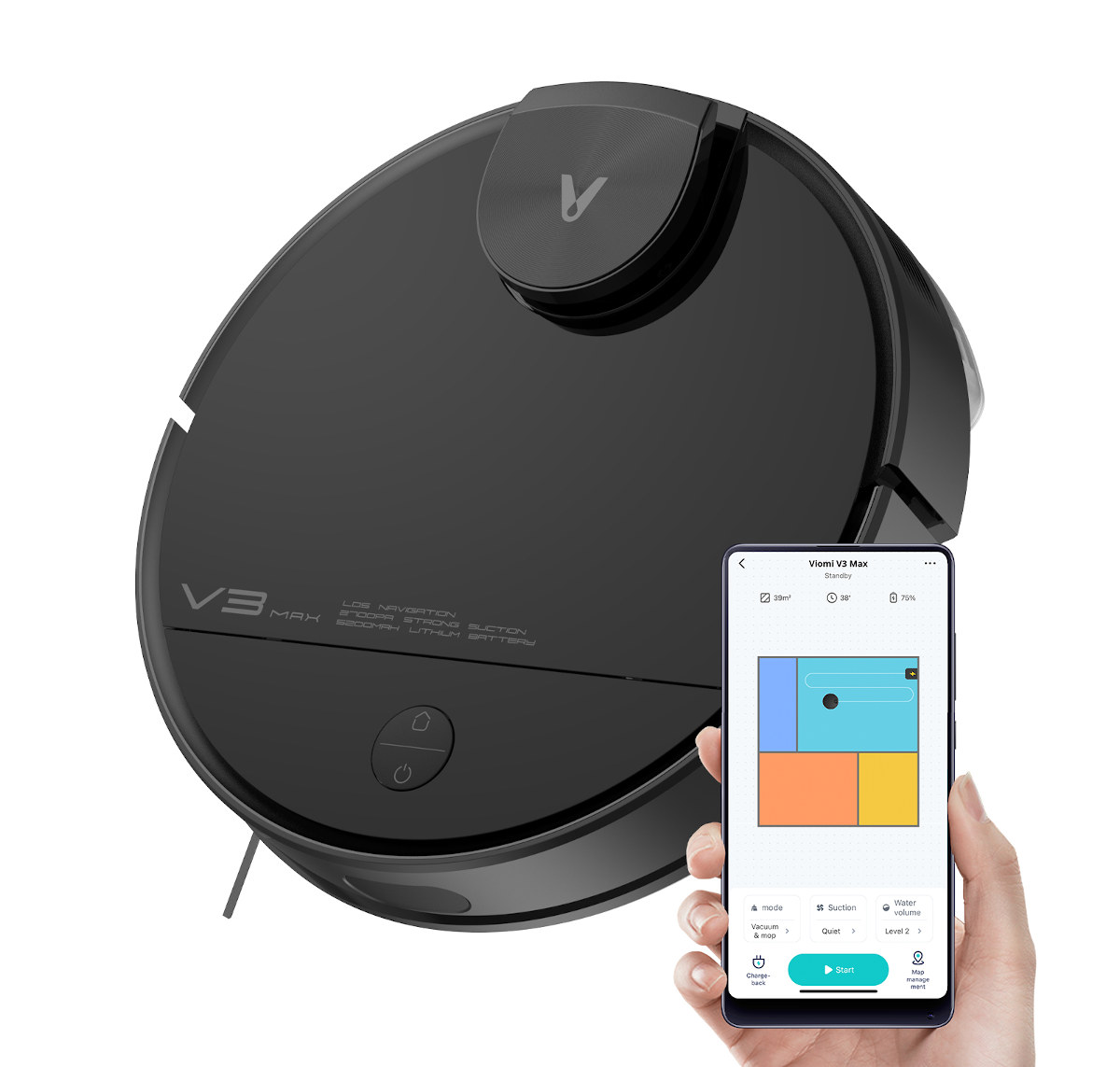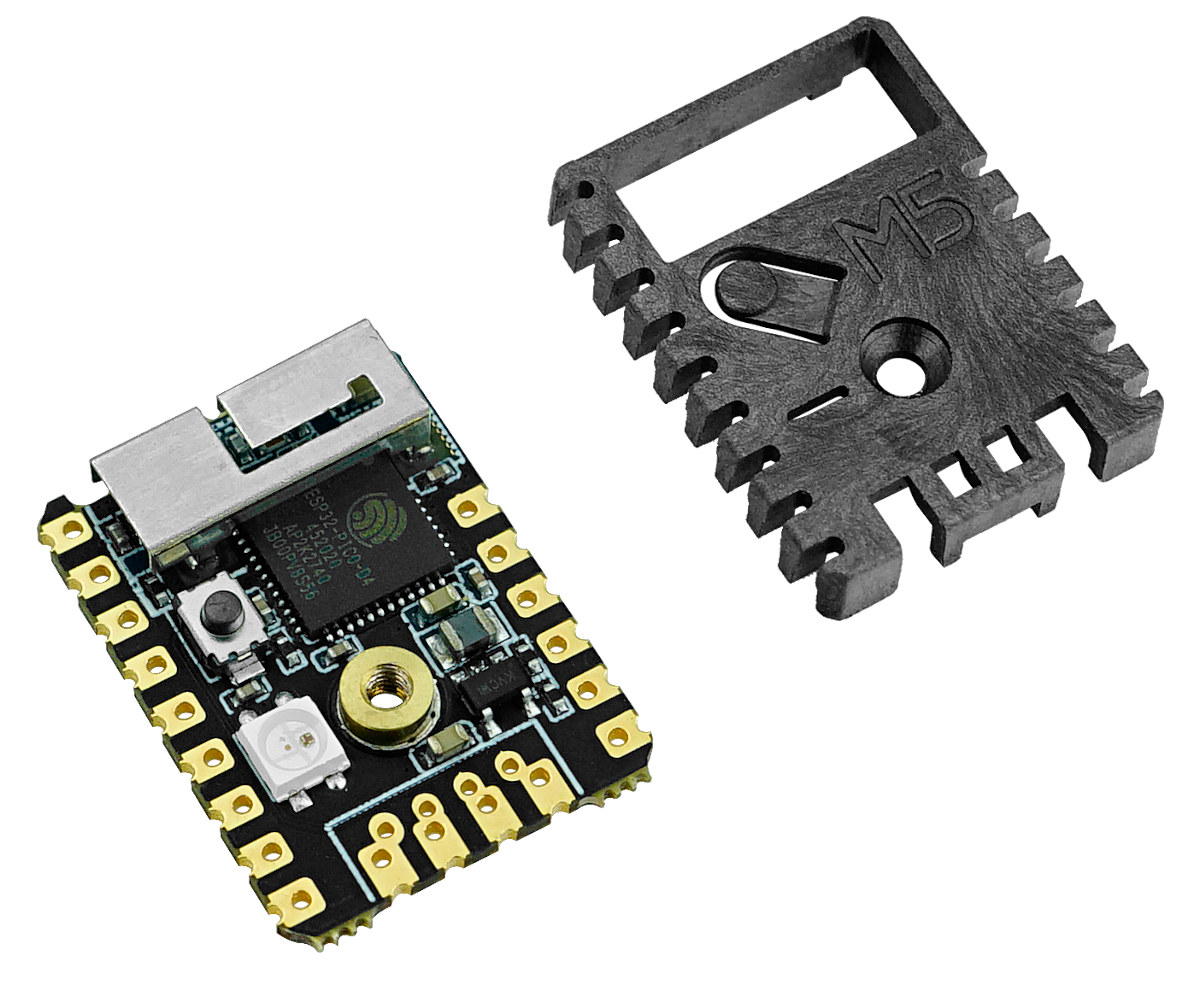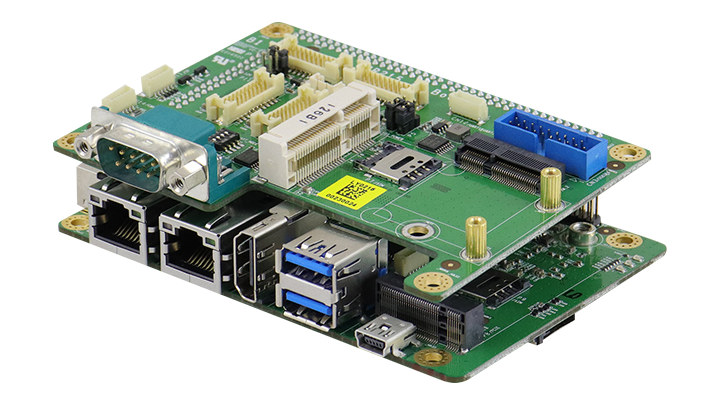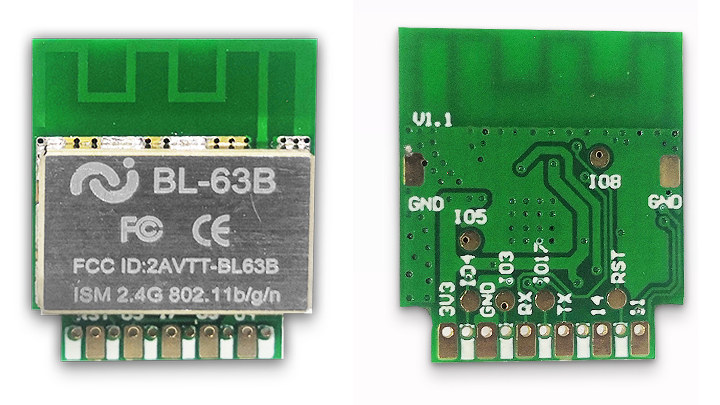Arduino is going full steam ahead with its Arduino PRO family of boards for industrial applications. After the announcement of the Portenta H7 Lite board earlier this month, the company has now introduced the Arduino Nicla Sense ME designed in collaboration with Bosch Sensortec. The Nicla Sense ME (Motion & Environment) board comes with a range of Bosch Sensortec sensors notably a 9DoF smart motion sensor and a 4DoF environmental sensor with AI capabilities, and targets industrial IoT applications either for research projects, rapid prototyping, or commercial products. Arduino Nicla Sense ME specifications: MCU – Nordic Semi nRF52832 Cortex-M4 microcontroller @ 64 MHz with 512KB Flash, 64KB RAM, Bluetooth 4.2/5.0 LE connectivity (via U-blox ANNA B112 module) Storage – 2MB SPI flash for storage; 2MB QSPI dedicated for BHI260AP Sensors BHI260AP motion sensor system with integrated AI, “Fuser 2” 32-bit Synopsys DesignWare ARC EM4 core with RISC FPU BMM150 magnetometer […]
ZB-GW03 ESP32-based Ethernet Zigbee gateway works with Tasmota firmware
ZB-GW03 is an Ethernet Zigbee Gateway compatible with eWelink mobile app and with a design similar to SONOFF ZBBridge gateway but replacing ESP8266 SoC by ESP32 SoC, and adding an Ethernet port. The ZB-GW03 gateway is apparently based on the same Silicon Labs EFR32MG21 Zigbee Arm Cortex-M33 chip and has been hacked to run Tasmota open-source software for people preferring more flexibility and/or integration with OpenHAB or Home Assistant open-source home automation frameworks via Zigbee2MQTT. ZB-GW03 gateway specifications: Main MCU – Espressif Systems ESP32 dual-core Tensilica TX6 processor @ 240 MHz with WiFi 4 and Bluetooth connectivity Zigbee MCU – Silicon Labs EFR32MG21 Arm Cortex-M33 MCU @ 80 MHz with Zigbee 3.0 connectivity Connectivity 10/100M Ethernet, WiFi, and Bluetooth via ESP32 Zigbee 3.0 via Silabs MG21 MCU with support for 128 nodes, up to 200+ meter range One 2.4 GHz Zigbee antenna One 2.4 GHz PCB antenna for WiFi Misc […]
Raspberry Pi smart audio devkit features AISonic IA8201 DSP, microphone array
Knowles AISonic IA8201 Raspberry Pi development kit is designed to bring voice, audio edge processing, and machine learning (ML) listening capabilities to various systems, and can be used to evaluate the company’s AISonic IA8201 DSP that was introduced about two years ago. The kit is comprised of three boards with an adapter board with three buttons connecting to the Raspberry Pi, as well as the AISonic IA8210 DSP board itself connected via a flat cable to a microphone array. Knowles AISonic Raspberry Pi development kit Knowles did not provide the full details for the development but says it enables wake-on-voice processing for low latency voice UI, noise reduction, context awareness, and accelerated machine learning inferencing for edge processing of sensor inputs. Some of the use cases include Low Power Voice Wake to listen for specific OEM keywords to wake the host processor, Proximity Detection when combined with an ultrasonic capable […]
Home Assistant Yellow – A Raspberry Pi CM4 based automation gateway (Crowdfunding)
The team behind the popular Home Assistant open-source home automation framework has just launched their second hardware with Home Assistant Yellow automation gateway based on Raspberry Pi CM4 module. This follows last year’s ODROID-N2+ based Home Assistant Blue which was a limited edition and has now been discontinued, albeit still supported. The carrier board for Home Assistant Amber is designed from scratch and notably includes Silicon Labs MGM210P Mighty Gecko Module with support for Zigbee 3.0, OpenThread, and Matter (Soon), as well as M.2 socket that can take an NVMe SSD, or an AI accelerator card. Home Assistant Yellow specifications: Supported SoM – Raspberry Pi Compute Module 4 (CM4) with Broadcom BCM2711 quad-core Cortex-A72 processor @ 1.5 GHz, up to 8GB RAM, up to 32GB storage. (Note: optional WiFI 5 and Bluetooth 5.0 connectivity not covered by regulatory approval) Storage – Support for NVMe SSD via M.2 socket, bootable for […]
Viomi V3 Max – A 3-in-1 sweep, mop and vacuum cleaner robot (Sponsored)
The Viomi V3 Max Robot Vacuum offers more than your typical Lidar robot vacuum cleaner as it features three functions, namely sweep, mop, and vacuum cleaner. It can even combine sweep & mop modes to thoroughly remove dust, dirt, water stains, crumbs, pet hair, and footprints on diversified floors. The Viomi V3 Max is born for mopping with an exclusive deep cleaning algorithm running on the Cortex-A35 processor powering the appliances, mimicking the manual way of mopping with 97.5% of cleaning coverage in order to ensure stubborn stains are removed without damaging the floor. An Auto Boost Mode enables perfect carpet cleaning with suction power automatically boosted to 2700Pa. The vacuum cleaner can either be fitted with 2-in-1 dust and water tank (400ml dust bin + 200ml water tank) to enable sweeping and mopping at the same time or an optional super-sized 700ml water tank that is large enough to […]
M5Stamp Pico ESP32-PICO-D4 module ships with a heat-resistant plastic shell
Most WiFi IoT modules are designed to be integrated into products with an enclosure, but the M5Stamp Pico module based on ESP32-PICO-D4 SiP comes with a removable heat-resistant plastic shell that protects the 3D antenna and components, while leaving space to solder headers and/or a Grove connector. The tiny module also comes with a button and RGB LED, and like other ESP32-based M5Stack hardware, M5Stamp Pico is programmable with UIFlow graphical programming platform and compatible with Arduino, MicroPython, and the ESP-IDF. M5Stamp Pico specifications: System-in-Package – Espressif Systems ESP32-PICO-D4 SiP with dual-core processor @ 240MHz, 520KB SRAM, 4MB flash, and 2.4 GHz Wi-Fi 4 up to 150 Mbps and Bluetooth 4.2 BR/LE connectivity Antenna – 2.4 GHz 3D antenna I/Os – 2.54mm pitch header with ADC, DAC, touch sensor, SD/SDIO/MMC host controller, SPI, SDIO/SPI slave controller, EMAC, PWM, UART, I2C, I2S, IR remote controller, up to 12x GPIO, pulse counter […]
5G compatible Arm Pico-ITX SBC is expandable through multi-function I/O board
IBASE IBR215 is a 2.5-inch Pico-ITX SBC powered by NXP i.MX 8M Plus quad-core ARM Cortex-A53 AI processor that supports 5G cellular connectivity via an M.2 3052 socket, and can be extended with an I/O expansion board with support for WiFi/BT, 4G/LTE, LCD, camera, NFC & QR-code functions. Equipped with up to 4GB RAM and 128GB flash storage, the single board computer has a ruggedized and fanless design that makes it suitable for industrial automation, smart home and buildings, smart cities and factories, retail environment, machine learning, and other industrial IoT applications. IBASE IBR215 specifications: SoC – NXP i.MX 8M Plus quad-core Arm Cortex-A53 processor @ up to 2.0 GHz with 512KB ECC cache, Arm Cortex-M7 @ up to 800 MHz, Vivante GC7000UL 3D GPU, Vivante GC520L 2D GPU, HiFi 4 DSP, 2.3 TOPS Neural Processing Unit (NPU) System Memory – 3GB DDR4 (optional 1/2/4GB) Storage 16GB eMMC flash (optional […]
BL-63B – A smaller BL602 IoT module that sells for $1.5
Bouffalo Labs BL602 is a low-cost, low-power RISC-V microcontroller that offers 2.4 GHz WiFi and Bluetooth 5.0 LE connectivity for IoT projects for about the price of ESP8266. We first discovered it last year, together with a development board. Pine64 created its own PineCone board fitted with the $2 PineNut module, and some reverse-engineering work has started on BL602 SDK. But there’s now another smaller BL602 module with “Machine Intelligence” (that’s the company name) BL-63B that sells for $1.5 on Taobao in China, as well as on LCSC Electronics albeit you’d need to purchase 1000 pieces to get that price, and single-unit pricing is currently $2.5. BL-63B WiFI & BLE module specifications: SoC – Bouffalo Labs BL602 32-bit RISC-V processor @ up to 192 Mhz with 276KB RAM, 128KB ROM, 1Kbit eFuse, WiFi and BLE Storage – 2MB flash Wireless 2.4GHz 802.11b/g/n WiFI 4 1×1 SISO up to 65 Mbps […]


